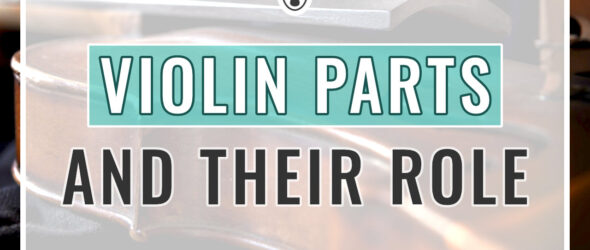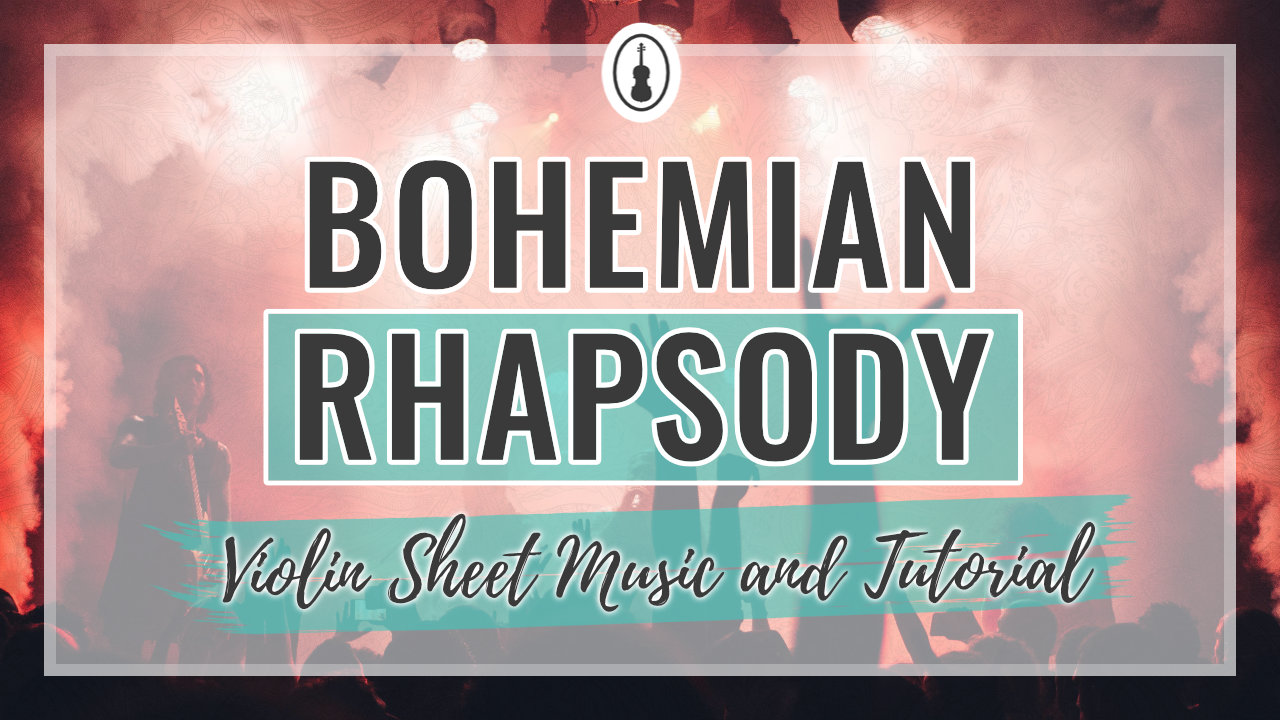Learn about violin parts: what they’re called and how they work to produce sound.
As you start to learn the violin, it’s important to learn about all the parts that make up the instrument. This helps you understand how it produces sound and gives you the right words to describe what you’re doing. It’s also important to understand the parts of a violin so you can maintain it, and create more beautiful sounds.
Today we’ll label the main parts of the violin and talk about the function of each one, so you can gain a better understanding of how your violin works.
Violin Parts Diagram
All the violin parts are labeled on my Violin Anatomy diagram. This is a great resource to reference as you read the article, and afterward too, to get to know all the parts of your own violin!
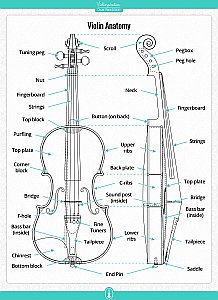
Violin Anatomy
Set of 3 Posters
Overview of the Violin Anatomy
The violin has many parts, just like our bodies do. In fact, it’s even somewhat shaped like a human! The bulk of the violin is called the “body,” the long skinny part where you play is called the “neck,” and the scroll at the top almost resembles a head. The violin also has a front and back.
There are pieces both on top of the violin and inside it, that all work together to create sound. Most of these violin parts are made of wood and are glued together. Let’s get started labeling all the violin parts!
Parts of the Violin Body
Today we’ll work from the lower end of the violin to the top. The main bulk of the violin is called the body. The “top” or “top plate” of the body is the front side, where the strings are located. The “back” is the opposite side.
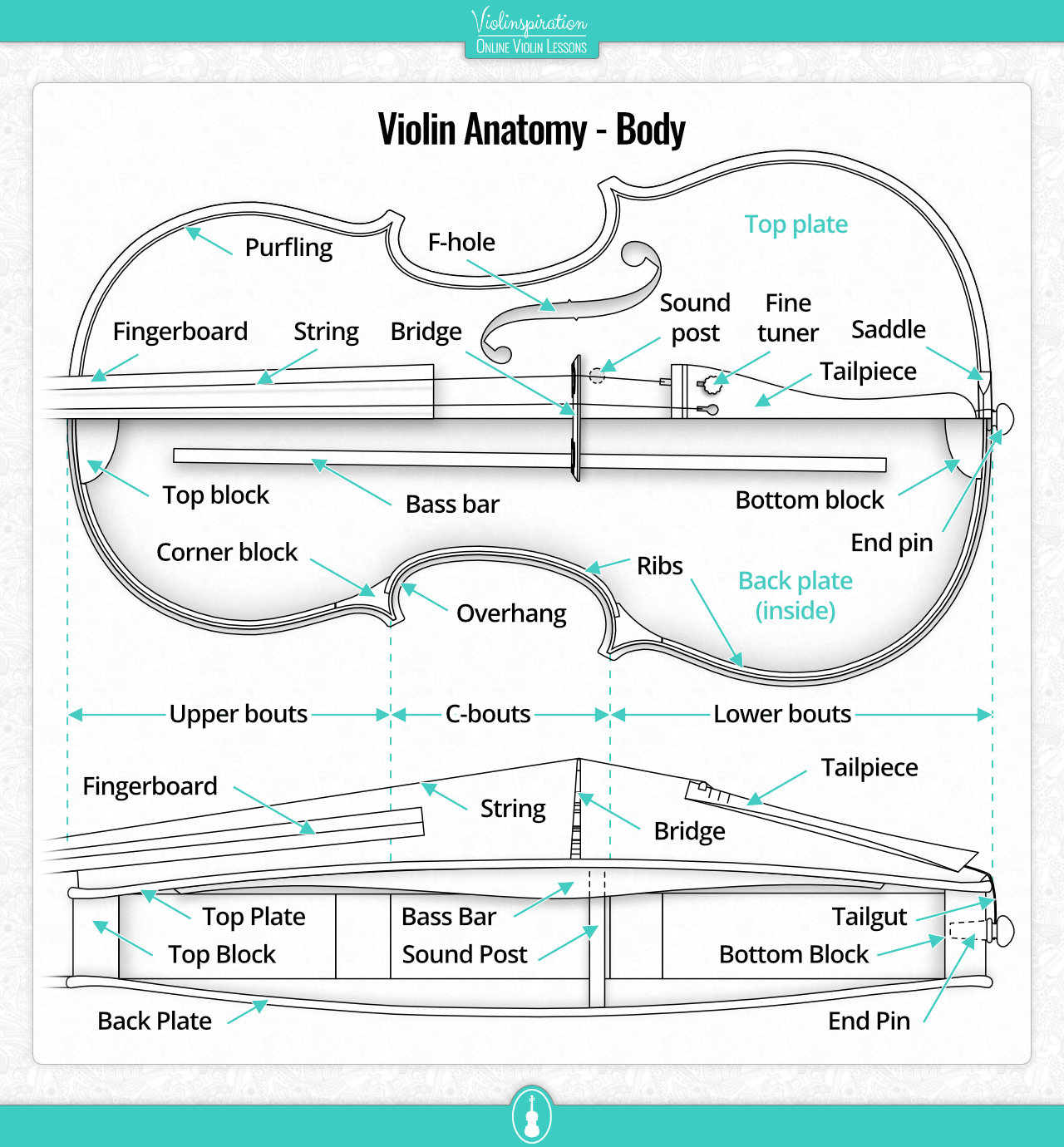
End Pin
At the bottom of the violin is a little button. On a cello or double bass, this is where the end pin comes out. This little button or knob holds the tailpiece in place. We usually call this an end button or the end pin.
Saddle
The violin saddle is a small piece of wood attached to the top of the violin, it keeps the tailpiece and the wire that holds it in place from digging into the top wood of the violin. Since this is made of wood, it vibrates and contributes to the overall sound.
Tailpiece
The tailpiece holds the strings in place, helping them to stretch far enough to create the right sounds. It has a beautiful curved shape and can be made of ebony, rosewood, or even plastic. The widest end of the tailpiece will either have holes for the ends of the string to rest in or fine tuners.
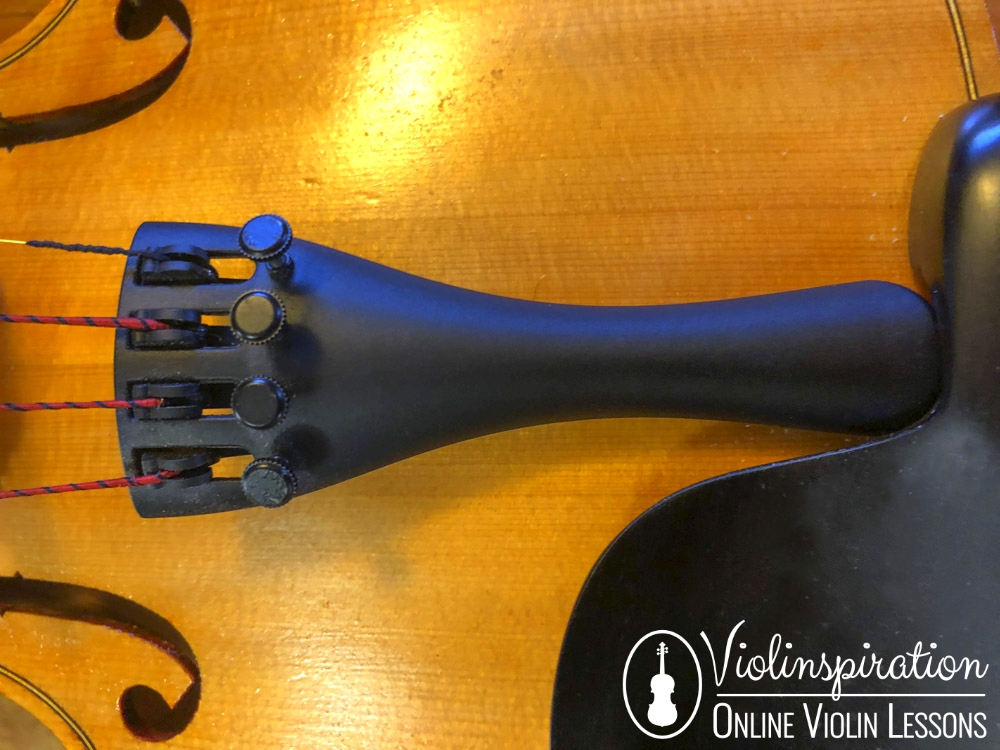
Fine Tuners
Fine tuners are small screws attached to the tailpiece, and they’re used to make small adjustments to the strings’ tuning. Not every violin has fine tuners, but they can always be added. They’re a very helpful asset for beginners: tuning with a fine tuner is much easier than adjusting the tuning pegs.
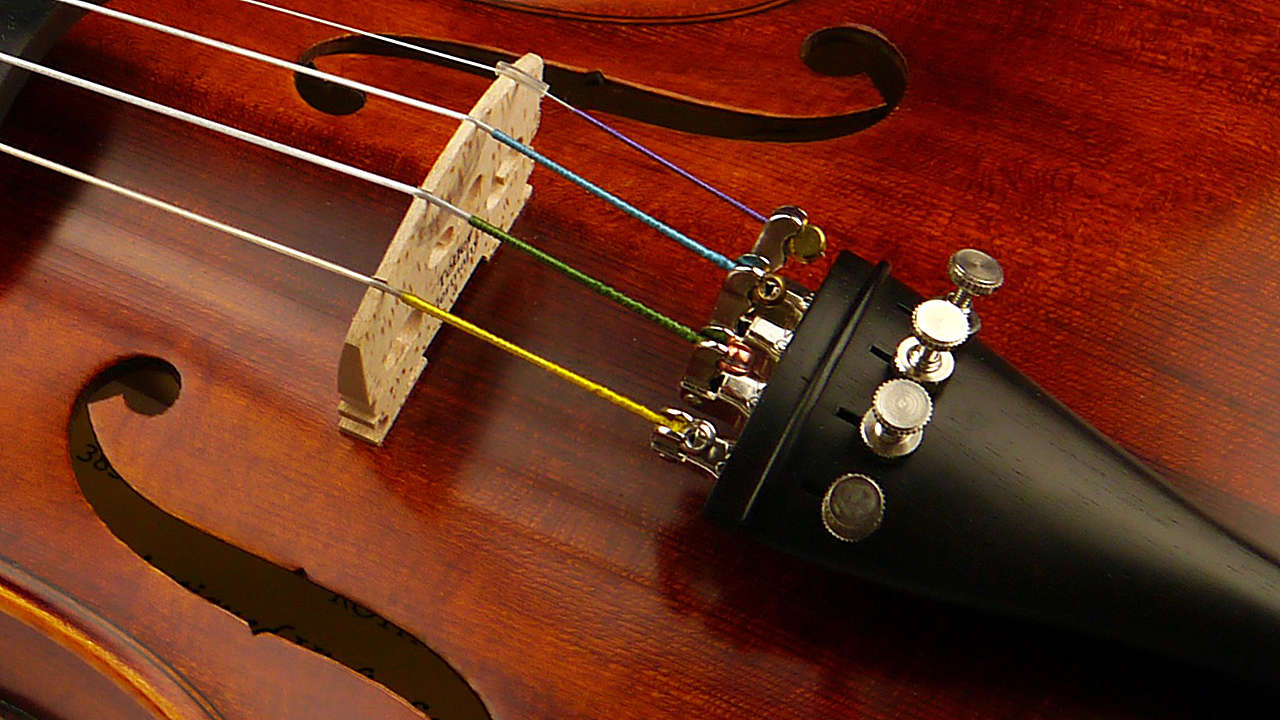
Chin Rest
The chin rest is usually located to the left of the tailpiece and is where we usually rest our jaw. Chin rests can come in all shapes and sizes to fit different body types, so you may easily find also a center-mounted chinrest. This part of the violin is easy to replace: it acts like a clamp around the violin, and just unscrewing it will release it.
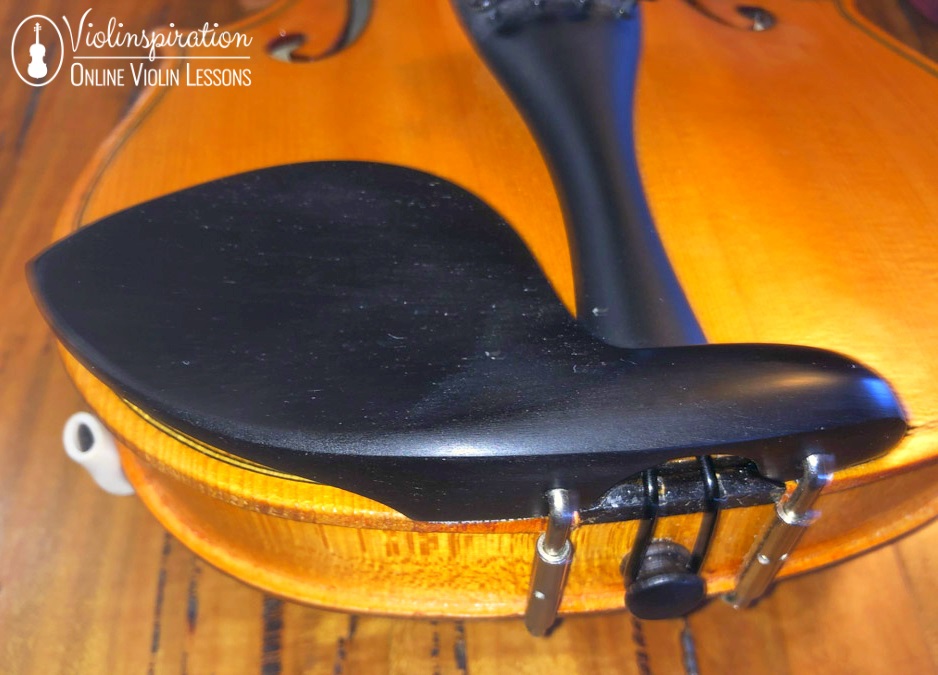
If you have a long neck, a tall chin rest can be very comfortable and will help you keep a good playing posture. If your neck or jaw feels very tender when you play, a chin rest with no large bump at the base will likely be more comfortable for you.
F Holes
The f holes are two symmetrical holes in the top plate of the violin, shaped like the cursive letter “f”. These holes allow you to look inside the violin! If you look inside the left f hole, you might see a label inside, on the back plate. This should tell you the maker and size of your violin.
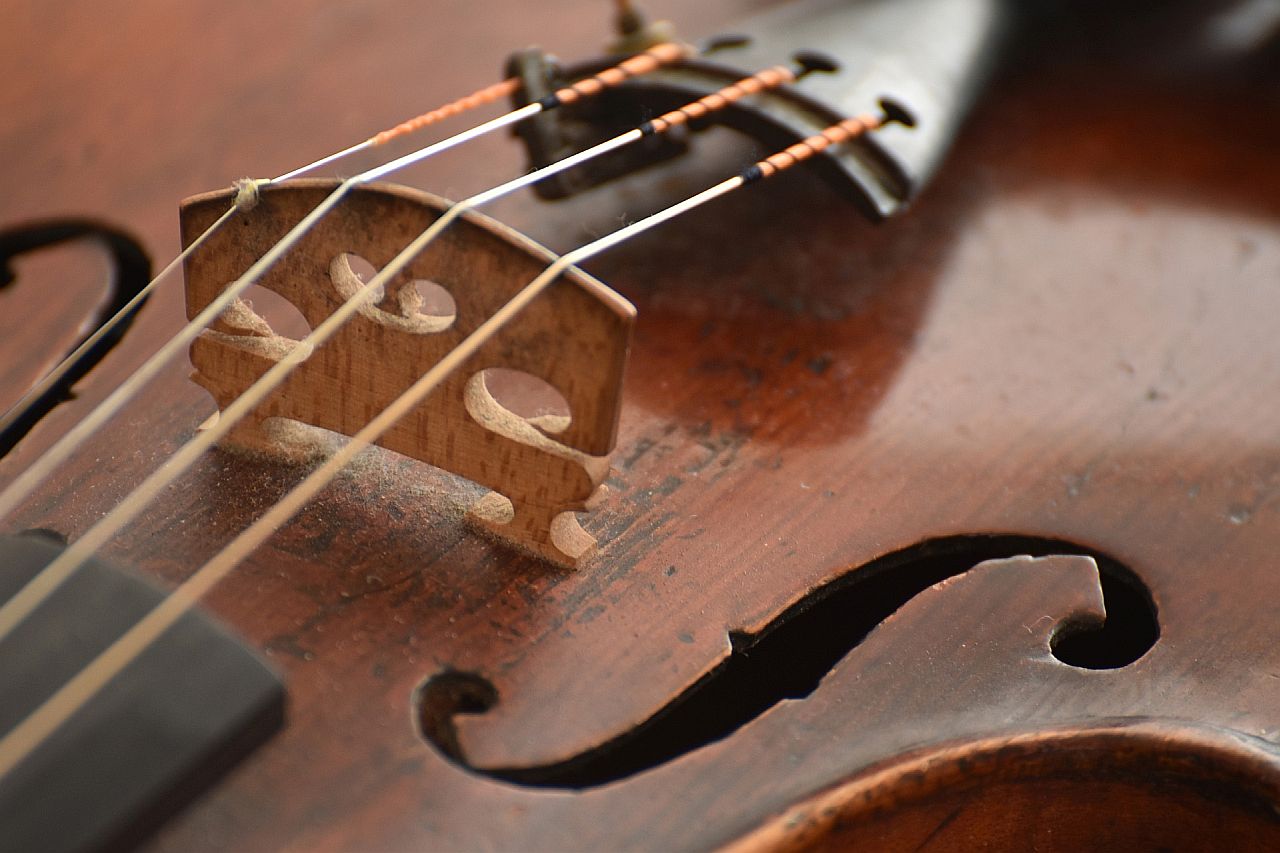
Want to learn more about the f holes? Read this article that goes very in-depth!
Bass Bar
Inside the violin on the left is the bass bar. This is a strip of wood attached to the bottom of the top plate. The bass bar vibrates when the lower strings are played, and transfers the vibrations, allowing the sounds to be heard.
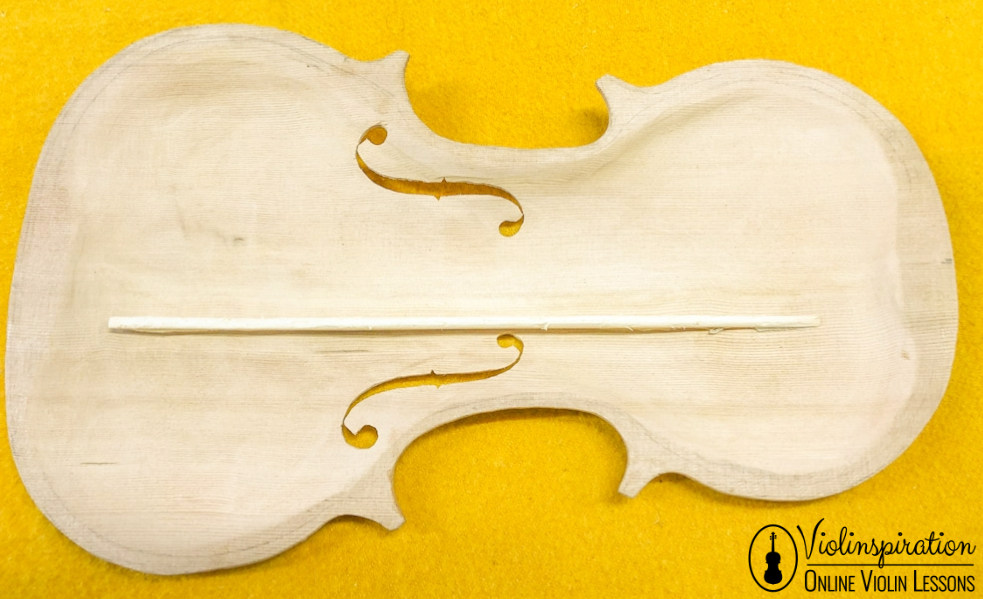
Sound Post
Inside the right f hole, you’ll see the sound post. This is a wooden pillar connecting the back and top plates. All the sound waves travel through the sound post, and it amplifies the sound.
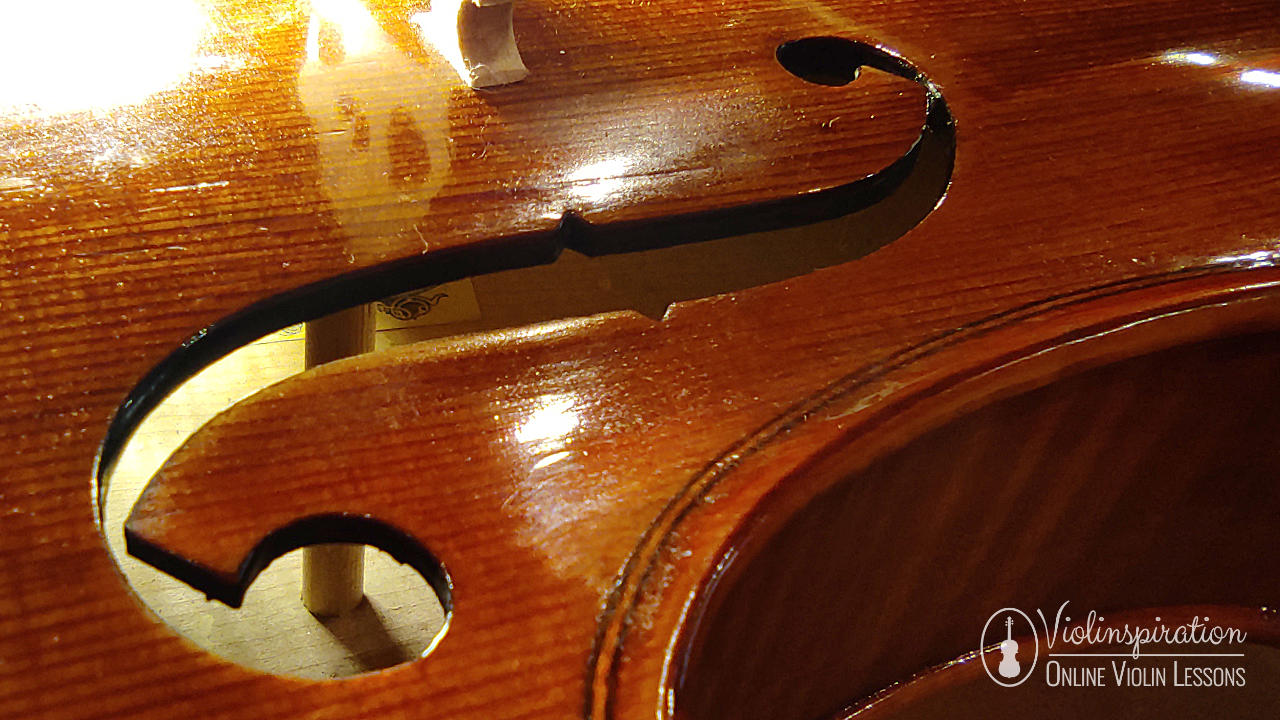
Learn more about it in my article on sound posts.
Blocks inside the Violin
On the inside, there are also various blocks that help to hold other parts of a violin in place and stabilize the whole construction. There is a bottom block that holds the end pin, the top block that is needed for attaching the neck, and there are four corner blocks.
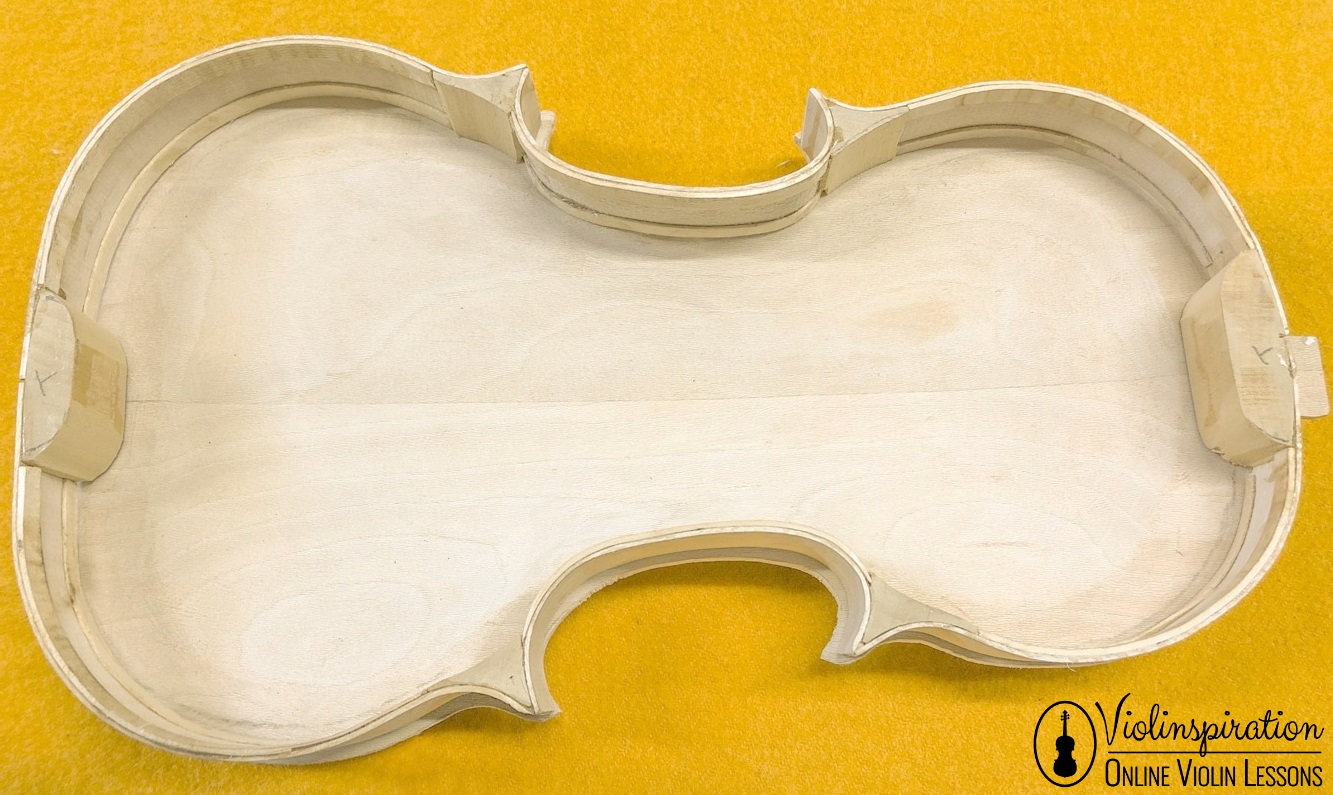
C Bouts
Looking at your violin face-on, you’ll notice two indents level with the f holes. These are the c bouts, which allow room for us to draw the violin bow across the strings. These also give the violin its beautiful hourglass shape.
The wide lower half of the violin body below the c bouts is called the lower bout, and the upper part of the body of the violin is called the upper bout.
Bridge
Between the f holes is the bridge. The bridge supports all four strings and connects their vibrations to the top plate, and, by extension, the bass bar and sound post. The sound then comes out of the f holes. The bridge has four grooves on top, one for each string to rest in.
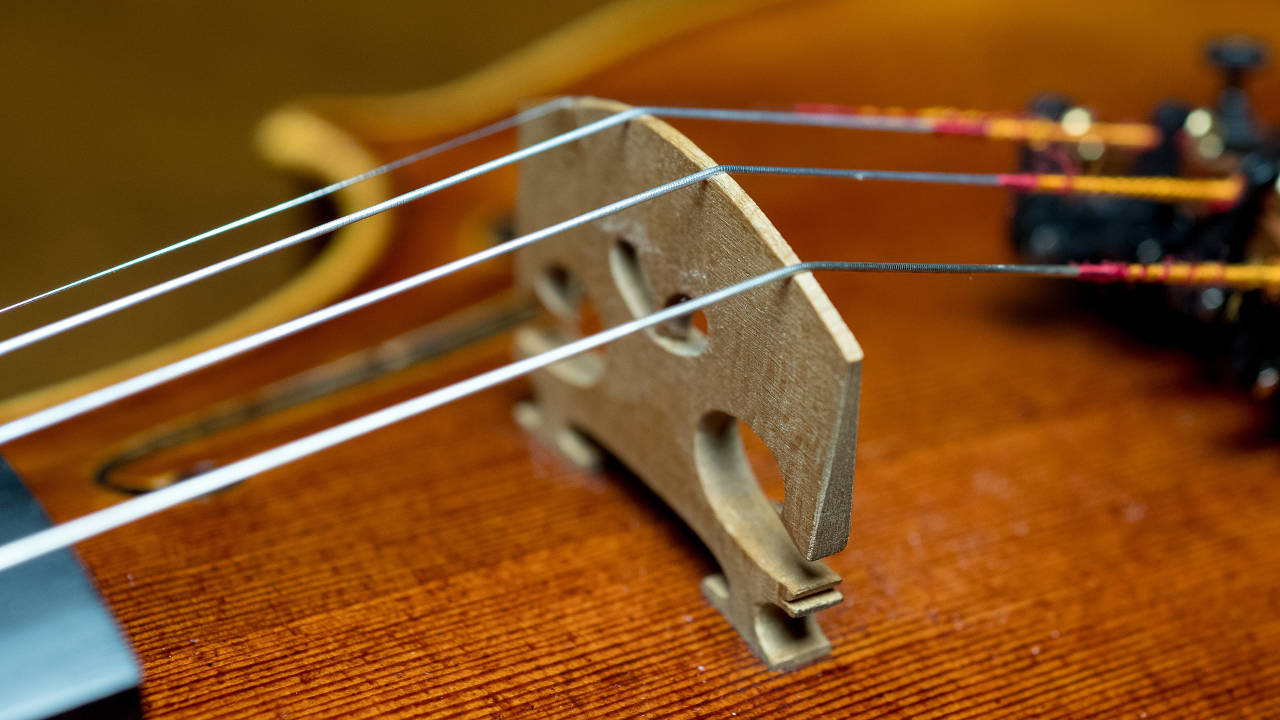
Need help to troubleshoot your bridge? Look no further than my article on the perfect violin bridge position!
The Strings
There are four strings on the violin, and they’re held in place by the tailpiece. They rest on top of the bridge. The strings run all the way up to the peg box, where each string is wound around a tuning peg.
The strings go from the lowest pitch on the left, to the highest pitch on the right. From left to right, we have the G string, the D string, the A string, and finally, the E string.

Fingerboard
The fingerboard extends from the end of the peg box and ends close to the bridge. This is a thin strip of wood that’s glued to the neck of the violin. As the name suggests, this is the board where we place our left-hand fingers to create notes.
You might notice that the beginning of the fingerboard, close to the pegs, is raised. This is called the nut. It lifts the strings off the fingerboard so they can be pressed down.
This part of the violin is almost always made of ebony, or sometimes rosewood or other hardwoods.
Become an expert on the fingerboard by reading this article!
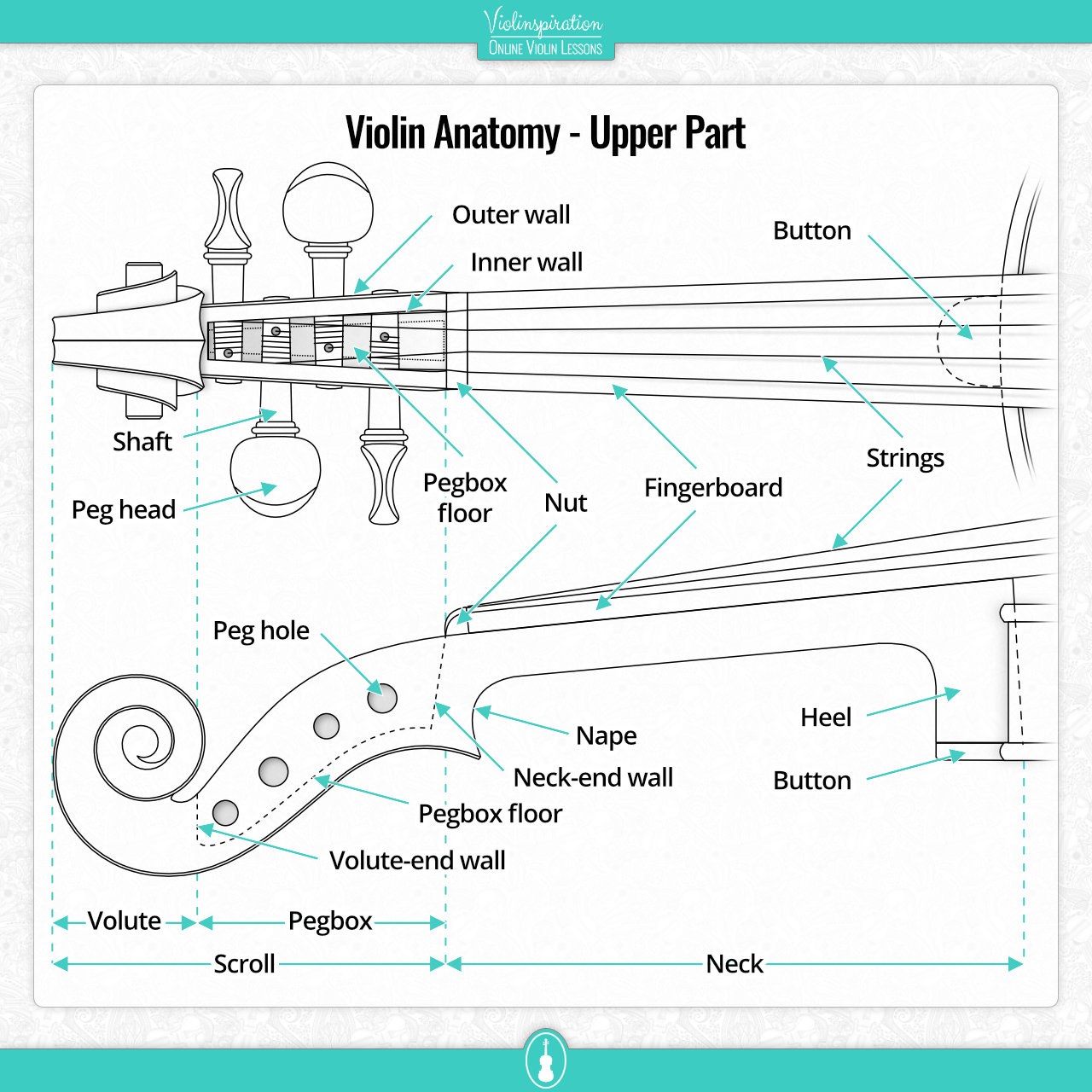
The Violin Neck
The fingerboard and end of the violin is called the neck. This part of the violin includes the fingerboard, the peg box with pegs, and the scroll.
Tuning Pegs and the Pegbox
Just past the fingerboard is the pegbox. This holds the pegs, which are used to tune each violin string. The pegs are better for larger tuning adjustments, whereas fine tuners are better for making small adjustments.
There are four tuning pegs, and each has a string wrapped around it. The pegs are placed in alternating directions: the lowest is placed with its head on the left of the neck, the next highest’s head is on the right, and so on.
The Scroll
The scroll is the curved, carved piece of wood at the end of the neck, and it’s purely decorative. A violin scroll is a place where many luthiers (violin makers) will show off their creativity. While most violins have uniform, circular scrolls, some ornate violins will have lions, faces, or flowers carved into this space.
The Violin Bow
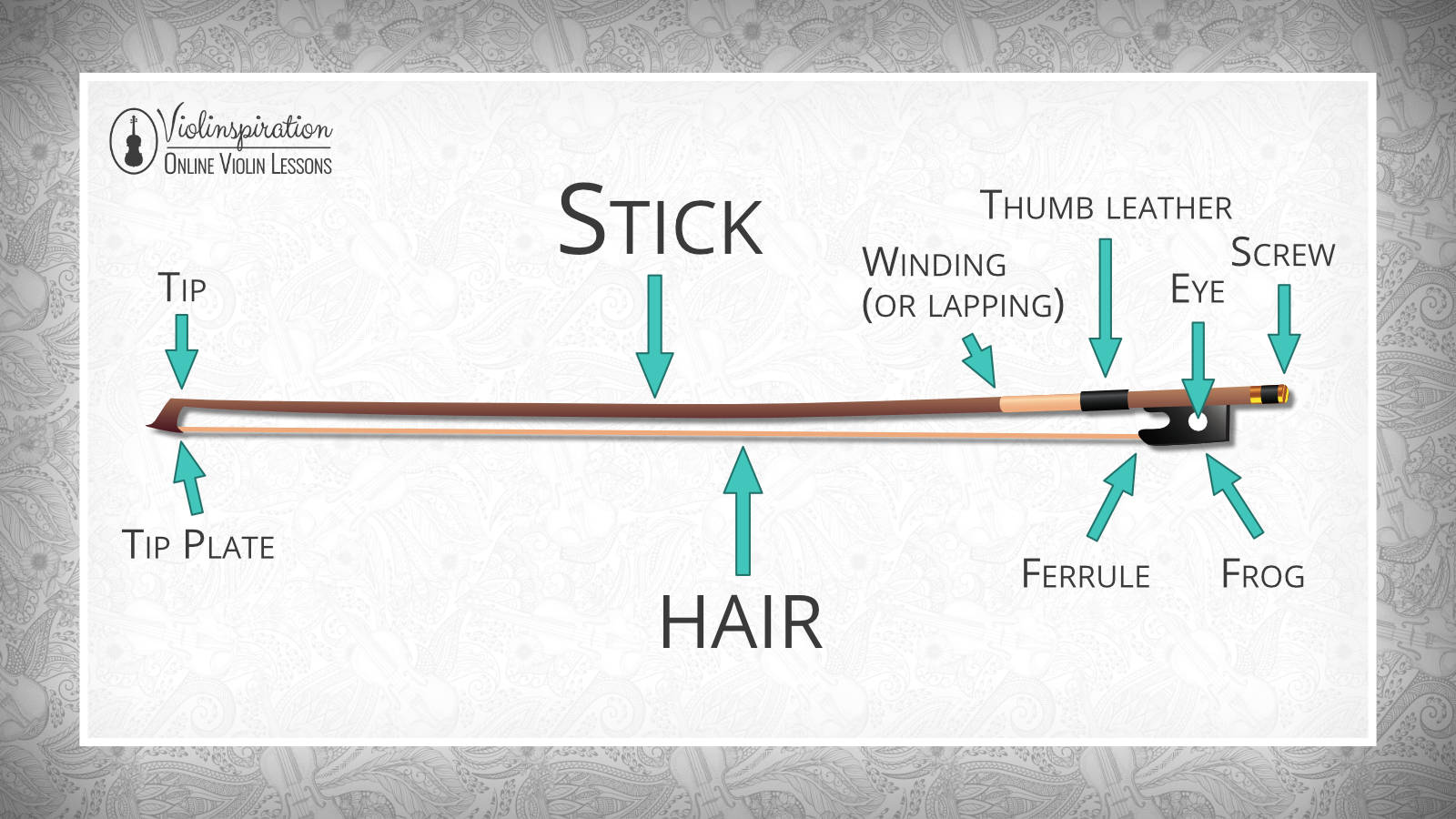
The bow is its own complex accessory to the violin. It’s important to know what bow parts are called and how they work. The main parts of the bow are the stick, the bow hair (traditionally made of horse hair), and the frog (where you hold it as you play).
To learn more about the violin bow, read my article on the bow anatomy. There’s even a video to go along with it to help you get to know all parts of the bow!
Frequently Asked Questions
I’m sure you probably have at least one question after going over all those violin parts! Here are a few questions I’m asked the most:
How many parts does a violin have?
A traditional, acoustic violin has about 90 different parts.
Today we discussed the main, most important parts of the violin (about 20), but there are a few other small pieces here and there, and the exact number depends on what you deem to be a “part”, and if you include the parts of the bow.
What’s inside your violin?
Inside the violin are the sound post, the bass bar, and a few reinforcement blocks around the bottom, top, and corners of the violin. We call these the top block, bottom block, and corner blocks.
All of these parts are made of wood and help to create and amplify the sound. They’re very structurally important and help make the violin strong.
Does an electric violin have different parts than a traditional violin?
An electric violin may have the same parts as a traditional violin but also can be built in a different way. An electro-acoustic violin will be most similar having extra parts like a built-in pickup, sockets, and knobs. A typical electric violin will often have bigger solid parts and a different look from a traditional violin.
Acoustic violins have a “hollow body”—they’re hollow inside and contain important parts that produce sound. Some electric violins are built in a similar way. These are called “electro-acoustic violins.” They can be played both with or without amps.
A typical electric violin is a “solid body.” These can only be played with external amplification, and are generally shaped a little differently. Instead of the full, symmetrical body of a traditional violin, this type of violin might have more of an S or V shape instead.
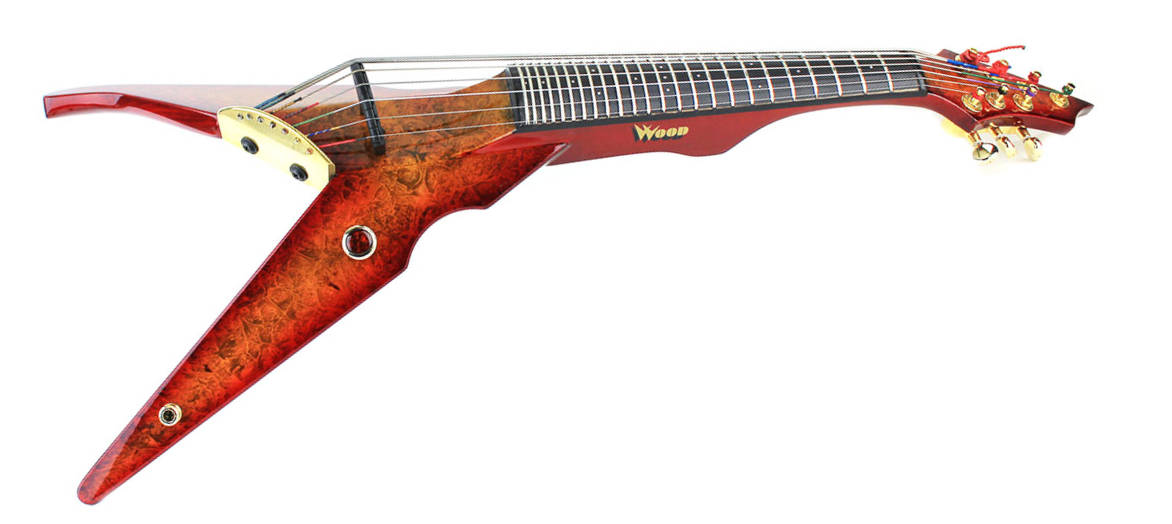
Electric violins will also have input jacks for amps and loop pedals, and volume and tone knobs.
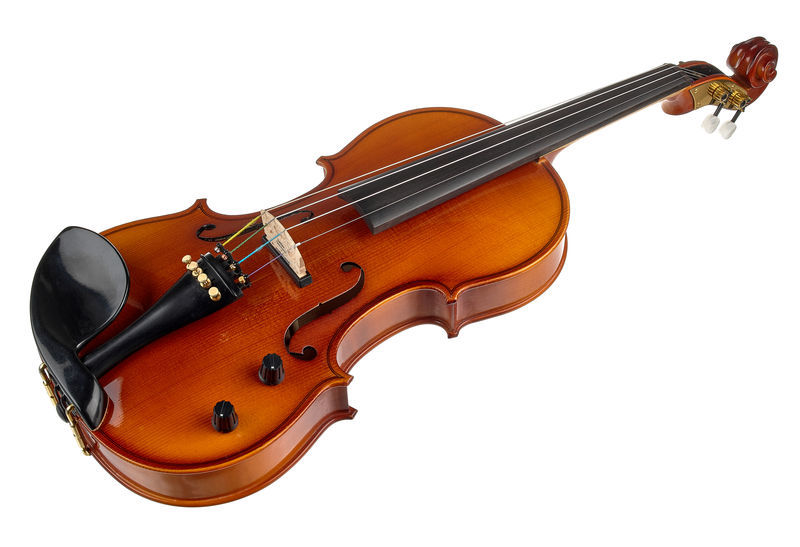
Have violins always had the same parts?
The modern violin dates back to around the 1820s when the chin rest was created. However, the violin as we know it is still very similar to the ones Italian violin makers like Stradivarius began to build in the 1600s.
To learn more, read about how violins are built, or read the history of the violin and other string instruments.
Now that you know all the parts of a violin, go ahead and try to name them on your own instrument! I highly recommend printing out my diagram of the violin anatomy to keep on your stand as you begin to learn the names of the violin parts. It’ll help you learn faster 🙂

Violin Anatomy
Set of 3 Posters
